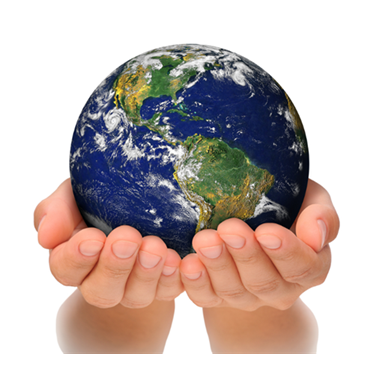If you think eight billion people living on planet Earth is optimal, think again! Many scientists have warned the world about over-population, climate change, starvation, extinction, and bio-diversity issues affecting our planet.
In 2023, our planet had eight billion people. There were only one billion people on the planet at the turn of the 19th century and only a few hundred thousand just 10,000 years ago. Scientists predict 9.8 billion population by 2050.

Protecting Our Planet
The world’s richest 500 million people in North America and Europe produce half the world’s carbon dioxide emissions, the primary greenhouse gas responsible for climate change, whereas the poorest three billion emit just seven percent.
Americans consume 25 percent of the world’s energy despite representing just 5 percent of global population, and the band of industrialized nations combine to waste 222 million metric tons of food per year, according to the UN Food and Agriculture Organization.
As for how many people our planet can sustain, the first such estimate in 1679 came from microbiologist Anton van Leeuwenhoek who calculated roughly 13.4 billion. A 1994 scientific study estimated optimal population size based on the minimal land needed for food production (0.5 hectare per person) and soil conservation, resulting in a population size of three billion people. Growth is expected to occur mostly in Africa, and abate in the Americas, Europe, and parts of Asia, especially as families in more-developed nations have fewer children. However, many overpopulated countries will need to slow their growth due to environmental concerns.
ABC TV’s 2010 special “Earth 2100” and 2020 PBS TV special “Extinction Facts” indicated a major environmental problem with over population, lack of food and water, climate change, wildlife species extinction, and habitat destruction between 2075 to 2100 (maybe sooner) affecting our planet.
More farmland is disappearing worldwide for housing demands and water supplies are not keeping up with the population demands. Plus, we have drought problems in the more populated areas or flooding attributed to the climate changes. If you notice in your local cities, you see new housing developments appearing every year to keep up with the population demands.
What is most alarming is our wildlife is declining quickly. The World Wildlife Foundation indicated in 2020 that 60% of our wildlife has been decimated in the last 50 years. One of the major problems with the extinction of our wildlife is the severe killing of many species for their fur, heads, tusks, or horns, which many cultures consider for either financial, religious, sexual, or medical reasons. Another wildlife problem is the worldwide wildfires. Remember when the USA promoted mink or sable coats until they were outlawed? This should be happening for all species worldwide, but sadly isn’t!
And now, the threat of conflicts with either China, Russia, North Korea and/or the Middle East may depend on our next presidential election. With Europe and the USA in defensive positions against these major threats, early predictions show the Asian countries could easily win today, but in the near future it would be either a tie or in NATO’s favor with the latest technology weapons. But for sure, both sides would likely have some or high casualties, which happens in every conflict and could determine the future of our planet.
And the need to colonize another planet such as Mars or further out will be imperative as our planet will be in serious environmental trouble unless changes are made in this decade.
However these major conflicts turn out, we have some major challenges ahead of us with hopefully the world leaders will fix before extreme measures are required! Sources: UN, WWF, ABC & PBS TV, & Pew Research Center.
